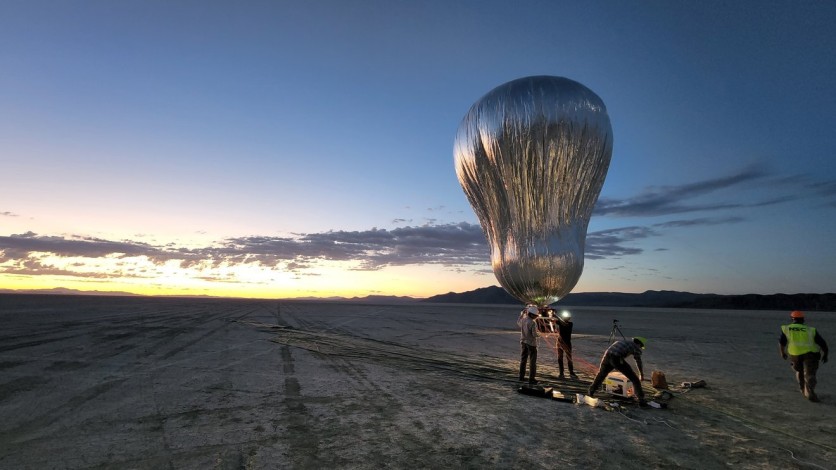NASA is currently preparing to take on the harsh and hellish surface of Venus. As part of its research and planning process, the space agency successfully launched a robotic balloon over Nevada's Black Rock Desert to test its ability to control altitude by the time it explores the planet.
Aerial Robotic Balloon
According to JPL, even the most resilient spacecraft can be rendered unusable in a matter of hours by Venus' surface's extreme pressure, heat, and corrosive gases.
However, the planet's dense atmosphere a few dozen miles above is much more conducive to a robotic investigation.
One concept calls for combining a balloon with a Venus spacecraft, with the two observing our neighbor planet together.

An aerial robotic balloon, or aerobot, of about 40 feet (12 meters) in diameter would enter the atmosphere while the orbiter would stay well above it, taking scientific observations and acting as a communication relay.
Recently, a prototype balloon that is about one-third that size was successfully launched twice by the Near Space Corporation in Tillamook, Oregon, and NASA's Jet Propulsion Laboratory in Southern California to test this concept.
Over Nevada's Black Rock Desert, the shining silver balloon rose more than 4,000 feet (1 km) to a portion of Earth's atmosphere that is similar to the temperature and density the aerobot would experience at a height of 180,000 feet (55 kilometers) above Venus.
Read Also : NASA's Hubble Space Telescope Captures a Strange Astronomical Explosion Surrounding a Young Star
Soviet Vega 1 and 2
These tests, which were organized by Near Space, are an important step in demonstrating the concept's viability for accessing a part of Venus' atmosphere that orbiters cannot reach but where a balloon mission could operate for several weeks or months, as per JPL.
To date, the Soviet Vega 1 and 2 missions, which landed at Venus in 1985, were responsible for the only balloon-borne investigation of its atmosphere. The duration of the two balloons, which had helium inside and a diameter of 11.5 feet (3.6 meters), was a little over 46 hours until their instrument batteries died.
A bigger, longer-duration balloon platform hovering within the atmosphere of the planet could do more science than they were able to during its brief stay in Venus' atmosphere.
The new aerobot's ultimate objective would be to circle Venus for at least 100 days by floating on its winds from east to west.
The aerobot can be instructed to raise and lower its altitude, something the Vega balloons couldn't do, to conduct science between approximately 171,000 and 203,000 feet (52 and 62 kilometers) within Venus' atmosphere, similar to the capabilities of a Mars rover.
"The success of these test flights is a huge deal for us: We've successfully demonstrated the technology we'll need for investigating the clouds of Venus," Paul Byrne, an associate professor at Washington University in St. Louis and aerobot science collaborator, said in a statement.
"These tests form the foundation for how we can achieve long-term robotic exploration high above Venus' hellish surface."
Related Article : [LOOK] NASA James Webb Images Dazzle in New X-Ray Light from Chandra
This article is owned by Tech Times
Written by Joaquin Victor Tacla
ⓒ 2025 TECHTIMES.com All rights reserved. Do not reproduce without permission.




